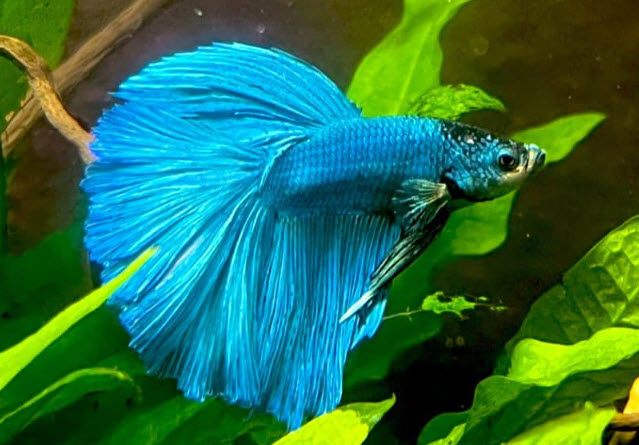The aquarium is a small ecosystem in which Mother Nature works her magic. And Mother Nature is very flexible and very forgiving. So when someone tells you “You must do blah blah” when you have an aquarium, ignore them. They don’t know what they are talking about. The only firm rule in the aquarium hobby is to use conditioner if you have chlorinated water. Everything else is just guidelines frequently ignored quite successfully.
This website is done in repeating layers, going from a very simple set of directions on how to set up one’s first aquariums all the way up to very complicated in-depth analyses based on scientific research.

Keeping it Somewhat Simple
The second level of complexity just adds some science to the setup of an aquarium. There are three topics of interest: chlorine, the amount of food, and “cycling”.

Chlorine
When starting any aquarium as a beginner there is only one well-defined rule that should never be broken:
If you have chlorinated water, you must use a water conditioner.
.Chlorinated water can kill fish in minutes. So always add conditioner if you have chlorinated water. 98% of the municipal water supplies in the USA chlorinate their water. But note well water is generally not chlorinated and thus doesn’t need conditioner.
I recommend finding a conditioner that says “sodium thiosulfate” on the label. Read the directions and then add five times the recommended level each water change.
For instance, let us say I am changing the water for a 20 gallon (75 liter) aquarium. I recommend a 50% water change. So one drops the level of water in the aquarium to 10 gallons (37,5 liter). Then add the amount of conditioner the label says will condition 50 gallons (187,5 liter) of water. Add the conditioner to the aquarium with the fish in it. The thiosulfate is harmless. Then add 10 gallons (37,5 liter) of water warmer than 65°F (18°C) to the 10 gallons (37,5 liter) in the aquarium. Easy.
Note there is no need to buy ANY bottled product other than conditioner. Adding things like stress coat, ammonia detoxifiers, bacteria-in-a-bottle, pH buffers, Lake Salt, aquarium salt, etc., etc. ad infinitum can kill your fish faster than anything else. But buying these chemicals creates literally billions in profits for enterprising companies.

Fish Food Amount
The biggest mistake beginners do is to over-feed their fish. Fish are cold-blooded creatures that do not need a lot of food. Uneaten food in the aquarium produces bacteria. Bacteria produce toxins. And those toxins can kill fish. After you have “cycled” the aquarium:
Feed the fish an amount of food equal to two eyeballs once a day.
.The profit-driven directions on the fish food package to “feed what the fish eat in two minutes three times a day” will kill your fish very rapidly.

“Cycling”
“Cycling” is the term used for the conversion of toxic fish pee (ammonia) to a relatively innocuous compound called nitrate. This is done in a filter by something called “beneficial bacteria” which live in the brown gunk on the filter media.
Any aquarium works best with LOTS of “brown gunk” in the filter
It is best to feed the tank for four weeks or so as though you have some fish but without fish. This “cycles” the tank. If you have fish in the tank just feed everything VERY lightly for a few weeks. Also add some soil from a potted plant or compost from the garden store to “seed” the beneficial bacteria (“bacteria in a bottle” or so-called “instant start” products do not work, as confirmed by extensive testing).
Your water may get cloudy for a few weeks. Ignore that. It will clear in four to six weeks. DO NOT change out the cloudy water. DO NOT clean the filters or change the cartridges. The brown “gunk” which builds up in the filters is a very good material called “beneficial bacteria” and is vital to the health of the fish. Your ornaments and gravel will get brown stuff on them. That is quite normal and the best course of action is to learn to live with it. This “brown algae” is good for the fish and is an essential part of a well-functioning aquarium ecosystem.
These three points, chlorine, “cycling”, and amount of food, are the second level of difficulty on this website. Still pretty easy!



